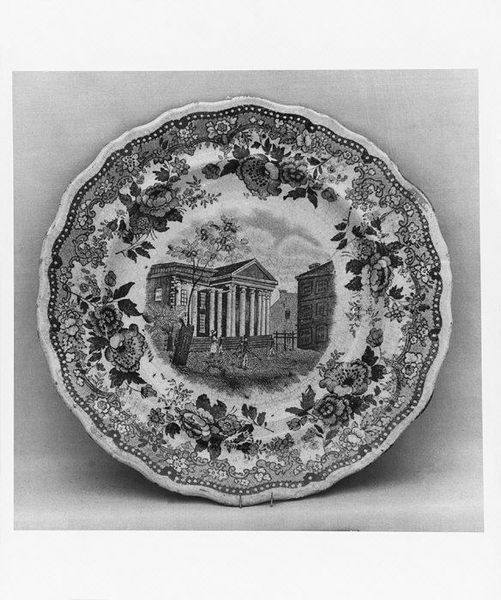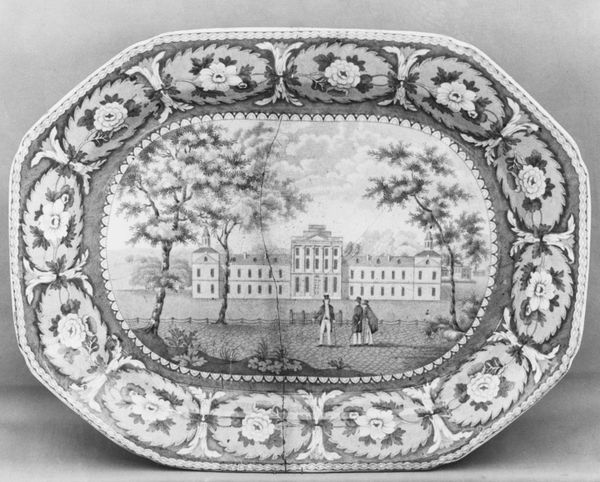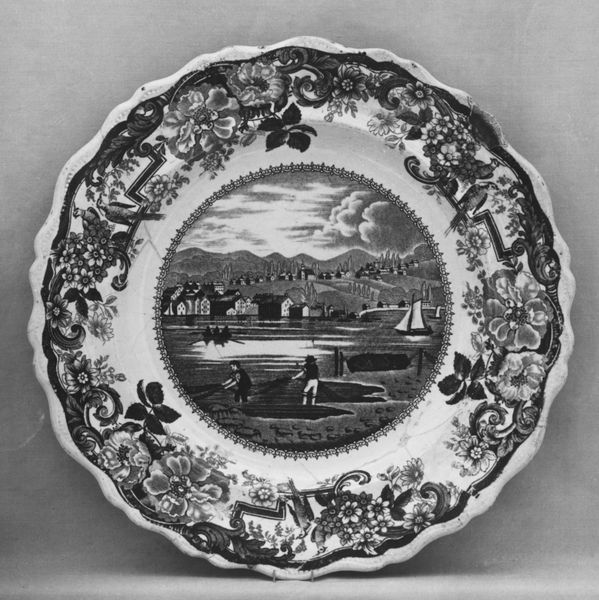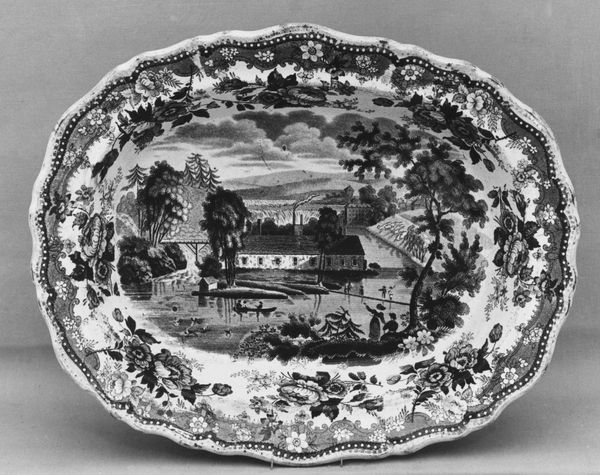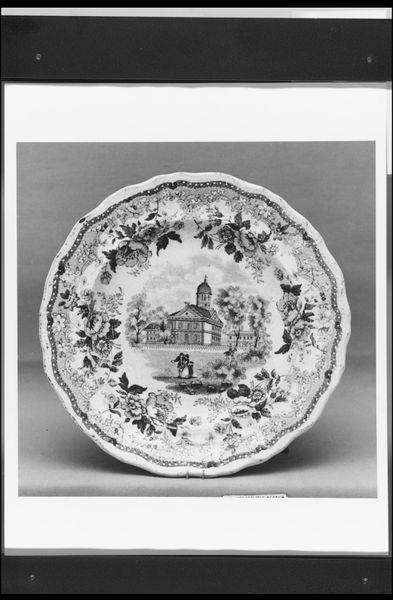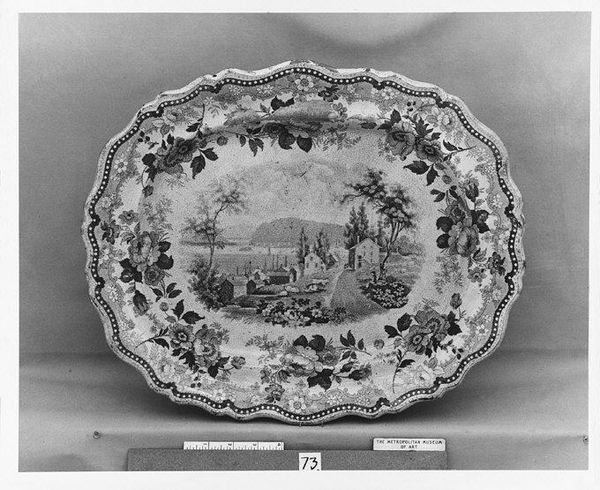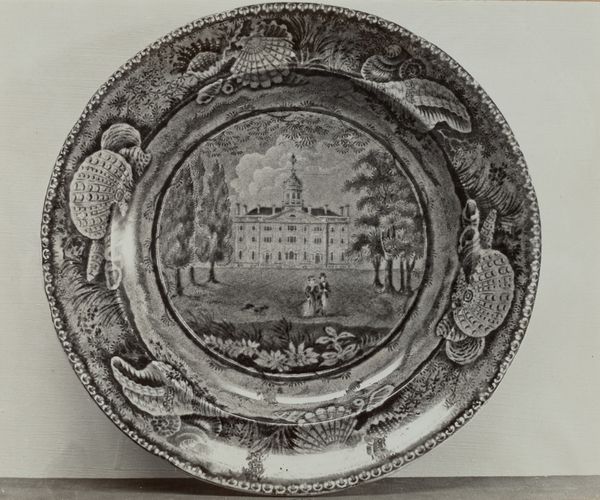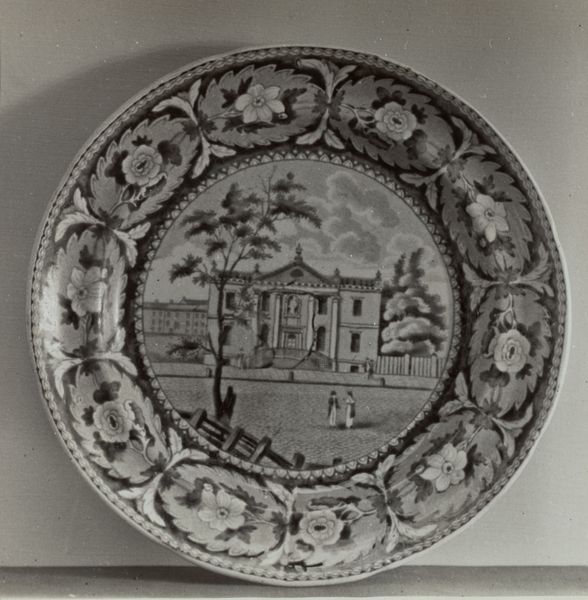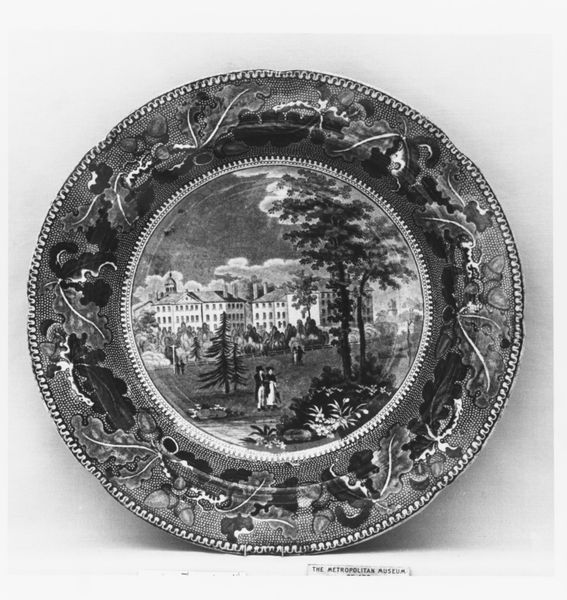
print, earthenware
#
neoclassicism
# print
#
landscape
#
house
#
earthenware
#
stoneware
#
england
#
black and white
#
horse
#
genre-painting
Dimensions: Diam. 4 1/8 in. (10.5 cm)
Copyright: Public Domain
Curator: Here we have a "Soup Plate" produced sometime between 1828 and 1838 by Job and John Jackson in England. The earthenware piece showcases a transfer-printed landscape in black and white. Editor: You know, it feels a bit like looking into a hazy memory. The monochrome scene has a kind of wistful quality, doesn't it? Almost like a half-remembered dream of a grand estate. Curator: Indeed. These plates were very much a product of their time, reflecting both neoclassical aesthetics and a burgeoning market for decorative tableware. They represent how industrial advancements allowed for the democratization of imagery and the proliferation of landscapes within the domestic sphere. Editor: The image of the manor house certainly dominates. You've got the figure on horseback, very tiny compared to the mansion in the background... It's interesting, because at first, I think, this person owns all this, and yet they look sort of lost or at least made small by their estate. Curator: That tension, I think, speaks to anxieties of class, and a longing to solidify the identities of owners of the land, despite their fragility as suggested by you. Editor: Right! And, technically speaking, the floral border almost domesticates that little drama unfolding in the plate's center, doesn't it? The formal pattern contrasts so wonderfully with the... the almost chaotic detail of the transfer-printed landscape, a man alone on his horse near his enormous estate! Curator: It's fascinating how a common object like a soup plate could reflect social dynamics. Beyond mere function, these pieces are cultural artifacts meant for viewing and admiring while simultaneously for daily, domestic usage. Editor: And I am sure it's also interesting that the black and white, almost photography, adds to a feeling that we are, from then on, observers, distant viewers of a moment in history, wouldn't you say? A little framed piece of the past. Curator: Absolutely, it transports us not just to an aesthetic space, but to a historical context rife with societal codes. These Jackson brothers really captured their historical period on such a piece, despite its limited utility! Editor: That's amazing. Looking at this piece certainly gives a lot to think about. Curator: Indeed, it prompts us to consider the hidden meanings behind everyday aesthetics, showing that history can be served up, even on a plate.
Comments
No comments
Be the first to comment and join the conversation on the ultimate creative platform.
